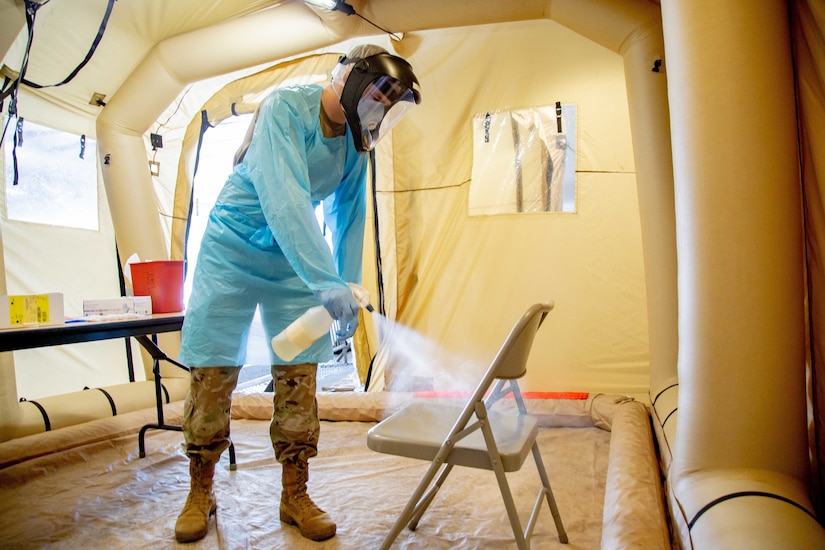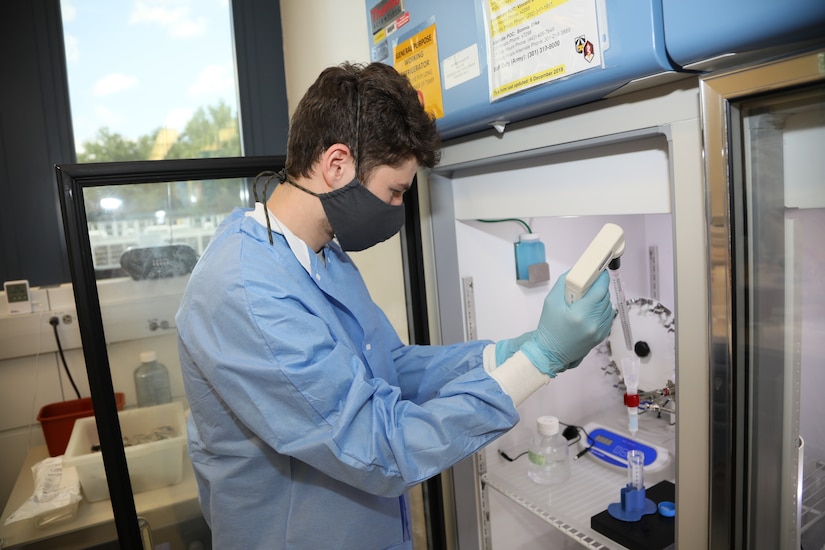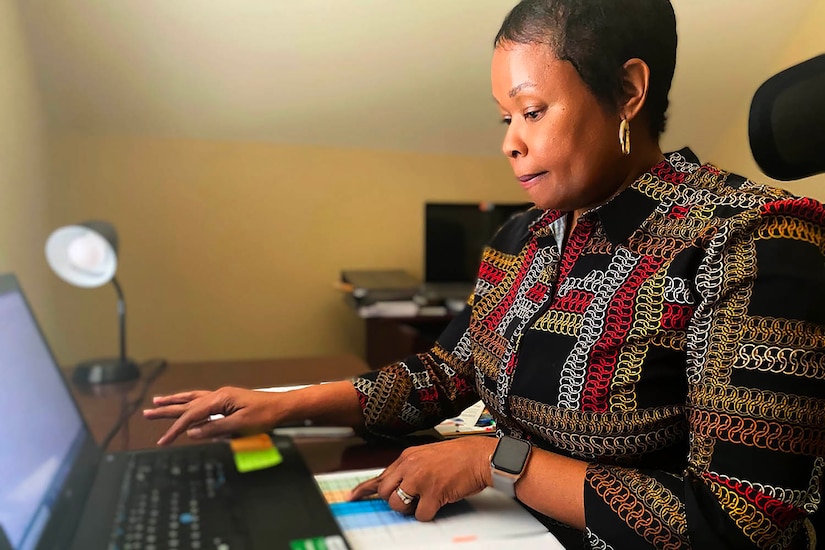Aug. 14, 2020 | , DOD News
Conditions-based reopenings have worked well for the Defense Department to date, and the undersecretary of defense for personnel and readiness anticipates the same stringent requirements will remain in place.

Matthew Donovan, whose Pentagon office is the epicenter of DOD's anti-COVID-19 fight, said he is pleased with the way service members and their families have responded to the pandemic. He put the experience in context during a socially distanced interview in his Pentagon office.
The Defense Health Agency worked closely with the Centers for Disease Control and Prevention beginning in December, when the first reports of the novel coronavirus surfaced in China. In January, Donovan — then the acting undersecretary — talked with Defense Secretary Dr. Mark T. Esper about the virus and the steps DOD had to take.
It was quick.
"My confirmation hearing was March 10, and we were still shaking hands," Donovan said. "On March 23, I was confirmed, and when I got back over here, the whole world had changed."
Esper was clear from the start about his priorities in a pandemic: protect service members and their families, ensure the mission continues, support civilian agencies as they lead the fight against the pandemic.
DOD acted quickly. Italy and South Korea were two of the first places where the virus appeared after China. Esper put in place a stop-movement order that was to last 60 days and then be reevaluated. In April, the virus had spread to the United States and other countries. Many areas locked down, businesses closed and activities cancelled.
But DOD had to continue. Service members still had missions to conduct. The United States had forces in Iraq, Afghanistan, Syria, Djibouti and many other nations. They had to continue to operate, and DOD personnel worked to ensure they safely could continue their vital missions.

DOD medical personnel and National Guardsmen assisted the areas hardest hit, with Navy hospital ships deploying to New York and Los Angeles and hospital units moving to New Orleans, Dallas, Seattle and other areas.
In May, the White House issued its "Opening Up America Again" guidelines, and DOD went to a conditions-based approach for movement. Areas had to meet certain conditions before the stop-movement order could be eased. That is the situation the department is in today.
"We put out the travel guidance that listed exemptions for moves and … waiver abilities for the Services for people that absolutely had to move," Donovan said. "All through this process, DOD personnel had to follow the latest CDC guidance, and local commanders had to gauge the situation on bases and in the surrounding communities,” he said.
"As we look forward, we have 231 installations that we're tracking around the world, and 99 of them had their travel restrictions lifted," the undersecretary said. "We continually review this. It's been complicated a little bit lately because of the rolling outbreaks the White House COVID Task Force told us might occur. That has caused some of our installations to go from green back to red because of conditions in the local communities."

DOD is working with other government agencies and private firms to develop a safe and effective COVID-19 vaccine. Some vaccines are already in large-scale testing, and it is possible that some could be ready by the end of the year. DOD is partnered with the Department of Health and Human Services to produce the approved vaccines to scale. DOD officials are also working with health officials to determine how to vaccinate service members and their families.
"There is, of course, a plan for vaccine distribution for everyone," Donovan said. "Nothing has been finalized, but if you look back at the priority framework that we developed for testing, …that provides a pretty good framework for who we would want to get the vaccinations to as well."
Vaccination is a national decision, he said, and DOD personnel would get the priority assigned to them by national leaders.
One aspect of the pandemic that has been eye-opening to DOD leaders is how effective telework has been. "There have been several pushes across the decades to increase the use of telework, but it never exceeded 5% of the federal workforce," Donovan said. "There has been a lot of skepticism about teleworking on the part of supervisors: How do I ensure that [my workers] are actually doing their work?"
Then the pandemic struck. "We had the impetus to drive to about 95 percent [teleworking] in Personnel and Readiness," Donovan said. "We're still at around the high 70s for teleworking. And guess what? The work got done. And that was even with a tripling of the workload because of COVID."

Donovan noted that productivity in some areas actually increased thanks to teleworking. He said he tips his hat to the Defense Information Systems Agency and DOD's chief information officer for building the network for teleworking.
The success has officials thinking of the way forward, as telework could cut the demand for office space and ease crowding in DOD buildings, he said.
Finally, Donovan said, he is concerned with readiness. He said the services have done an excellent job keeping the "throughput" for recruits during the pandemic. A short pause allowed the services to develop procedures to continue training safely, and it's back on track. "We think there will be minimal effect on service end strength," he said.
The pandemic has had some effect on unit readiness. Some exercises and training events were cancelled due to the virus, but commanders have tried to make up those training events. Still, fewer flight hours, steaming hours and the like can affect readiness, Donovan said. But DOD and service officials did not let that impact crucial missions, he added, and they will watch this readiness issue carefully.







No comments:
Post a Comment